Looking for a used car? Avoid costly mistakes by dodging the worst cars known for poor reliability, frequent breakdowns, and expensive repairs. Based on owner feedback, mechanic insights, and recent UK surveys, this SEO-optimized guide ranks the top 10 worst used cars to avoid. From notorious German saloons to British SUVs, these models plague drivers with gearbox failures, electrical faults, and turbo troubles. Save your wallet and sanity—read on for the ultimate list of worst cars and expert tips to buy smarter.
Table of Contents
ToggleWhy These Are the Worst Cars: Hidden Costs of Unreliable Vehicles
Choosing a used car can save thousands, but the worst cars turn bargains into nightmares. Data from What Car?, Auto Express, and owner forums highlight models with repair bills often exceeding £1,500, especially after 80,000 miles. Common problems? Faulty electronics, clutch failures, and diesel-related woes that hit harder with rising parts costs and stricter emissions rules. Whether you’re searching “worst cars UK” or “unreliable used cars,” this list will steer you clear of regret.
Top 10 Worst Cars to Avoid: The Unreliable Models Countdown
Our ranking of the worst cars is based on repair frequency, cost, and owner dissatisfaction. Always check mileage and service history before buying.
Chapters on the Worst Cars:
- 00:00 Introduction
- 01:20 Vauxhall Astra
- 02:13 Volkswagen Passat diesel (2010 – 13)
- 03:18 Nissan Qashqai (2014 onwards)
- 04:16 BMW 5 Series E60
- 05:20 Land Rover Discovery (2015 onwards)
- 06:30 Nissan X-Trail
- 07:19 BMW 1 Series E87
- 08:17 Audi A3 diesel (2003 – 2013)
- 09:21 Range Rover
- 10:24 Volvo XC90
- 11:27 Top Tips
10. Vauxhall Astra (2010s Onwards)
The Vauxhall Astra, a go-to choice for UK families, seems like a budget-friendly hatchback with its sleek design and practical features. However, it earns its place among the worst cars due to persistent reliability issues that turn ownership into a costly ordeal. Popular in the 2010s, this compact car appeals to those seeking affordability, but its widespread mechanical and electrical problems make it a risky buy, especially for high-mileage examples.
Key Issues:
The Astra suffers from a trio of expensive faults: gearbox failures, electrical gremlins, and clutch wear. Both manual and automatic transmissions, particularly in 1.4 and 1.6 petrol models, are prone to grinding noises or shifting problems, with repairs often costing over £1,000. Electrical issues are a major headache, with faulty sensors triggering dashboard warning lights and infotainment systems failing entirely, leading to bills of £500 or more.
Clutch problems, especially in diesel models like the 1.7 CDTi, can surface as early as 60,000 miles, with replacements averaging £800. In worst-case scenarios, engine failures—particularly in the 1.6 diesel—require full rebuilds, with costs soaring past £2,000. Owner forums consistently report these issues worsening after 80,000 miles, making high-mileage Astras a gamble. Poor build quality exacerbates these problems, with components wearing faster than rivals, leading to frequent garage visits.
Why It’s One of the Worst Cars:
Parts shortages for older Vauxhall models drive up repair costs, and the Astra’s below-average reliability scores in What Car? surveys highlight its shortcomings. Owners often face lengthy downtime and frustration, negating the car’s initial affordability. With used car prices remaining high, investing in an Astra can lead to financial strain if repairs pile up.
Pro Tip:
Before buying a used Vauxhall Astra, thoroughly review its service history for evidence of regular maintenance, particularly for gearbox and clutch repairs. During a test drive, listen for unusual noises when shifting gears and test all electrical components, including windows, lights, and the infotainment system. A pre-purchase inspection by a trusted mechanic, costing £100–£200, can uncover hidden issues like worn clutches or early engine trouble. For cars with over 80,000 miles, negotiate the price to account for potential major repairs, and prioritize models with documented maintenance.
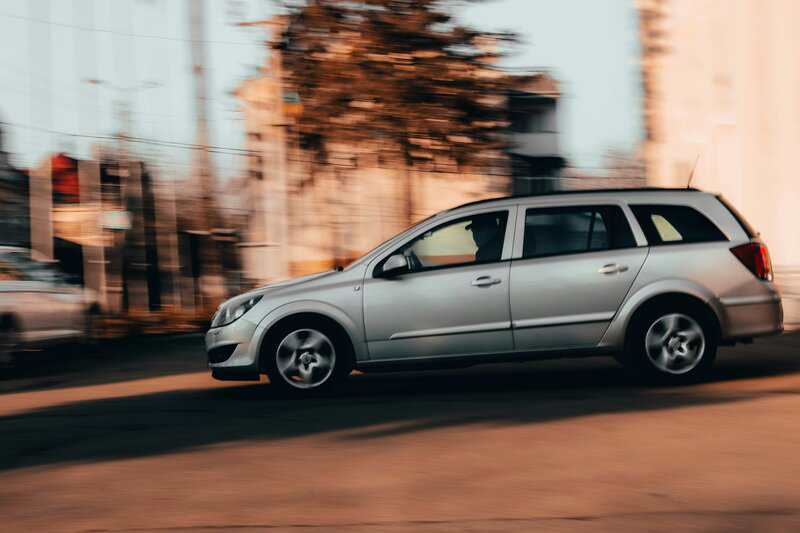
9. Volkswagen Passat Diesel (2010–2013)
The Volkswagen Passat Diesel (2010–2013) is a spacious and comfortable saloon that competes with the likes of the Toyota Camry, but its reliability issues cement its status as one of the worst cars for used buyers. Popular for its refined ride and generous boot space, this model initially seems like a solid choice for families or long-distance drivers. However, its diesel variants, particularly the 2.0 TDI, are notorious for a range of costly problems that surface as mileage climbs, making it a risky purchase on the used market.
Key Issues:
The Passat Diesel is plagued by persistent oil leaks, often requiring frequent gasket replacements costing £300–£500 per fix. Misfiring coils and spark plug issues are common, especially after 88,000 miles, leading to rough idling and reduced power, with repairs averaging £400. Electrical faults are a major concern, particularly dashboard blackouts caused by wiring issues, which can cost over £1,000 to rewire. The 2.0 TDI engine also suffers from turbo-related problems, including clogging and pressure loss, with replacements hitting £1,500 or more. Owner forums highlight these issues intensifying after 100,000 miles, with some reporting injector failures that add another £800 to the bill. These problems, combined with the car’s complex electronics, lead to frequent and expensive garage visits.
Why It’s One of the Worst Cars:
Stricter diesel emissions regulations have increased maintenance costs for older diesel models like the Passat, with potential fines for non-compliant vehicles adding to the financial burden. Parts for older Volkswagens are becoming pricier due to supply chain issues, and the Passat’s below-average reliability scores in Auto Express surveys reflect widespread owner dissatisfaction. Buying a high-mileage example without a thorough check can lead to spiraling repair costs that outweigh the car’s initial affordability.
Pro Tip:
Before purchasing a used Volkswagen Passat Diesel, inspect the engine bay for signs of oil leaks and test all electrical systems, including the dashboard, during a test drive. Verify the car’s service history for evidence of turbo or injector maintenance, as these are common failure points. A professional diagnostic scan, costing £100–£150, can detect hidden electrical issues. If considering a diesel, opt for a model with documented emissions compliance to avoid regulatory headaches, and prioritize petrol variants for lower maintenance costs.
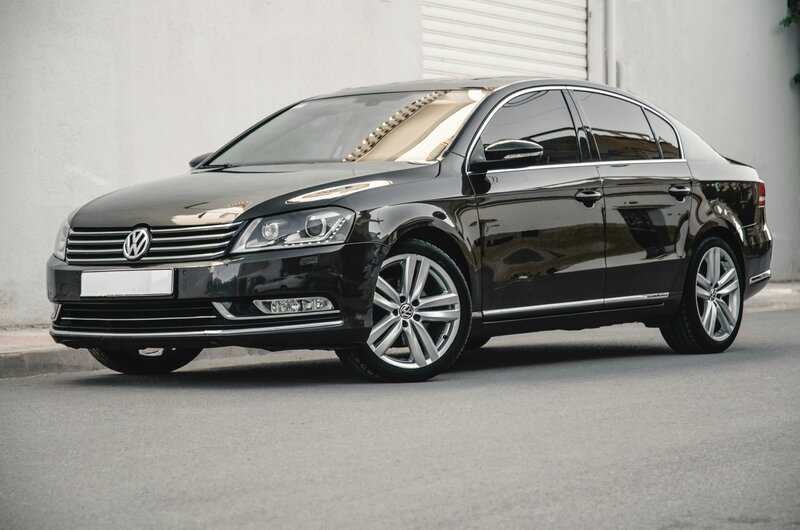
8. Nissan Qashqai (2014 Onwards)
The Nissan Qashqai, a UK bestseller in the crossover SUV market, promises style, practicality, and family-friendly features, but its reliability woes make it one of the worst cars for used buyers. Launched in 2014, this second-generation model gained popularity for its sleek design and versatile interior. However, persistent mechanical and electrical issues, particularly in early models, have tarnished its reputation, leading to costly repairs and frustrated owners, especially as mileage climbs.
Key Issues:
The Qashqai is plagued by a trio of major problems: battery drain, engine timing chain failures, and CVT gearbox issues. The 1.2 DIG-T petrol engine is notorious for timing chain failures, often requiring replacements costing £1,200–£1,800, with issues surfacing as early as 70,000 miles. The CVT automatic gearbox, found in many models, suffers from shuddering and premature failure, with rebuilds averaging £1,500–£2,000.
Electrical faults, particularly battery drain caused by inefficient systems, lead to frequent replacements (£150–£300 each) and issues with features like parking sensors and infotainment screens. Diesel variants, such as the 1.5 dCi, face turbo clogging and injector problems, adding £800–£1,500 to repair bills. Owner forums report these issues worsening after 80,000 miles, with some drivers facing multiple failures in a single year, making high-mileage Qashqais a risky bet.
Why It’s One of the Worst Cars:
The Qashqai’s reliability scores poorly in What Car? and Auto Express surveys, with owners citing frequent breakdowns and high maintenance costs. Aging models struggle with fuel efficiency, leading to higher running costs, especially under stricter emissions regulations. Parts supply issues for older Nissans further inflate repair bills, and the CVT gearbox’s complexity makes fixes time-consuming and expensive. For buyers seeking a dependable SUV, the Qashqai’s initial affordability is quickly offset by its long-term costs.
Pro Tip:
Before buying a used Nissan Qashqai, prioritize models from the 2017 facelift onwards, as these have slightly improved reliability. Check the service history for evidence of timing chain or CVT maintenance, and inspect the battery and electrical systems during a test drive—test all features, including sensors and screens. Listen for unusual noises from the gearbox and engine, particularly on 1.2 DIG-T models. A professional inspection, costing £100–£200, can detect hidden issues like turbo wear or early chain failure. For high-mileage examples, negotiate the price to account for potential repairs, and consider petrol manuals over CVT or diesel variants for fewer headaches.
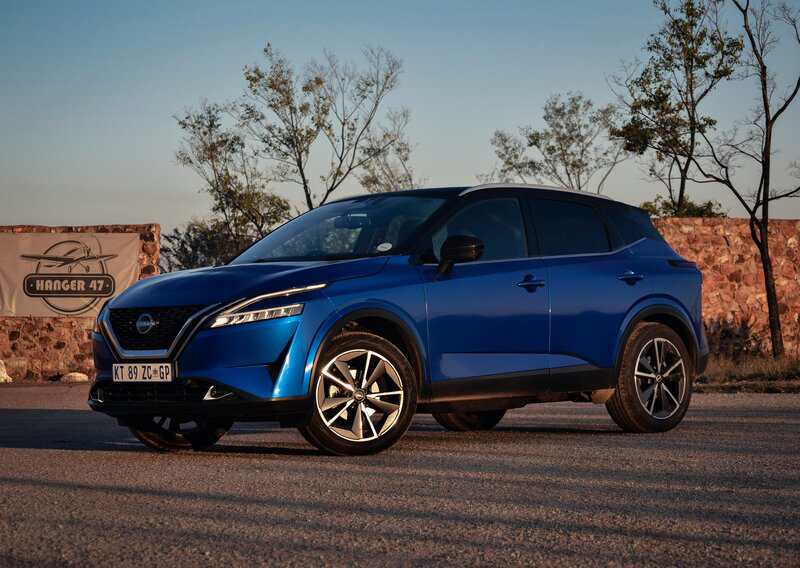
7. BMW 5 Series E60 (2003–2010)
The BMW 5 Series E60, a premium executive saloon from 2003 to 2010, boasts sleek styling and dynamic performance, but its notorious reliability issues make it one of the worst cars for used buyers. Revered for its driving experience and luxurious interior, this model, including variants like the 530i and M5, attracts buyers seeking a high-end badge. However, a litany of mechanical and electrical problems, coupled with sky-high repair costs, turns ownership into a financial burden, especially for high-mileage examples.
Key Issues:
The E60 is plagued by a range of costly faults, starting with sensor and electrical failures, particularly in the 535i, where faulty modules trigger warning lights and system malfunctions, costing £500–£1,000 to fix. Oil leaks from gaskets and valve covers are common, requiring repairs of £300–£600, with issues emerging as early as 70,000 miles. Turbocharged models, like the 535d, suffer from turbo clogs and failures, with replacements costing £1,500–£2,500.
The M5 variant is particularly problematic, with its V10 engine prone to catastrophic rod bearing failures and complex SMG gearbox issues, leading to repair bills exceeding £3,000. Owner forums report frequent iDrive system crashes and battery drain from faulty electronics, adding £400–£800 per incident. These problems intensify after 100,000 miles, making high-mileage E60s a risky purchase.
Why It’s One of the Worst Cars:
The E60’s premium parts and complex engineering drive repair costs through the roof, with BMW dealerships charging a premium for labor and components. Supply chain issues for older BMW models further inflate prices, and the E60’s poor reliability scores in Auto Express and What Car? surveys reflect widespread owner frustration. The car’s high initial cost and rapid depreciation mean buyers often overpay for a vehicle that becomes a money pit, especially without meticulous maintenance.
Pro Tip:
Before buying a used BMW 5 Series E60, demand a full BMW service history, ideally from an authorized dealer, to confirm regular maintenance. Inspect the engine bay for oil leaks and test all electronic systems, including iDrive, climate control, and sensors, during a test drive. Listen for turbo whine or gearbox noises, especially in M5 models. A professional diagnostic scan, costing £100–£200, can uncover hidden faults like sensor issues or early turbo wear. Avoid high-mileage examples unless maintenance records are impeccable, and negotiate the price to account for potential repairs, particularly for turbo or M5 variants.
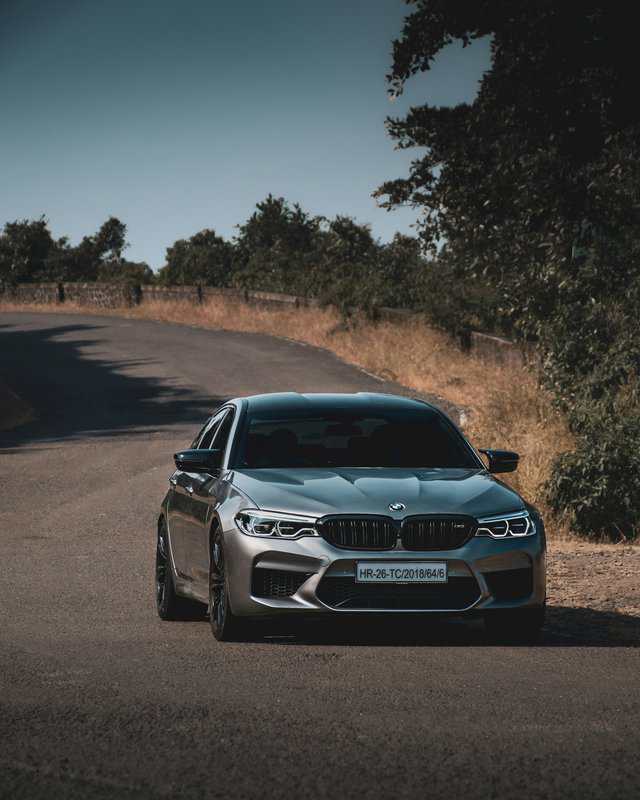
6. Land Rover Discovery (2015 Onwards)
The Land Rover Discovery, particularly models from 2015 onwards, is celebrated for its off-road prowess and luxurious interior, but its dire reliability earns it a spot among the worst cars for used buyers. While the base model has issues, the Discovery Sport variant is especially problematic, plagued by a host of mechanical and electrical failures that lead to costly repairs and frustrated owners, particularly after the warranty expires.
Key Issues:
The Discovery suffers from multiple reliability headaches, including bodywork rust, air conditioning failures, and gearbox issues. Rust appears on the chassis and door sills, especially in wet climates, costing £500–£1,000 to repair. The air conditioning system often fails, with compressor or condenser issues requiring fixes of £300–£600. Gearbox problems, both manual and automatic, lead to sluggish shifting or complete failure, with repairs averaging £1,000–£2,000.
The Discovery Sport is particularly notorious, with additional issues like brake system failures (£800+), engine electrical faults (£500–£1,200), and steering problems (£1,000+). Owner forums report these issues emerging as early as 60,000 miles, with the Sport’s complex electronics, including infotainment and parking sensors, prone to glitches costing £400–£800 to fix. High-mileage examples often face multiple failures, making them a financial risk.
Why It’s One of the Worst Cars:
The Discovery’s poor reliability is well-documented in What Car? and Auto Express surveys, with owners citing frequent breakdowns and high repair costs. Warranty issues hit hard after a decade, as Land Rover’s expensive parts and labor rates inflate bills. Rust and electrical problems reduce resale value, and the Sport’s subpar build quality exacerbates long-term costs, making it a poor choice for budget-conscious buyers.
Pro Tip:
Before buying a used Land Rover Discovery, inspect the chassis and bodywork for rust, especially under the vehicle and around wheel arches. Test the air conditioning, gearbox, and all electronic systems, including infotainment and sensors, during a test drive. Verify the service history for evidence of regular maintenance, particularly for gearbox and brake repairs. A professional inspection, costing £100–£200, can detect hidden issues like rust progression or electrical faults. Avoid the Discovery Sport unless maintenance records are comprehensive, and negotiate the price to account for potential repairs, especially for models over 80,000 miles.
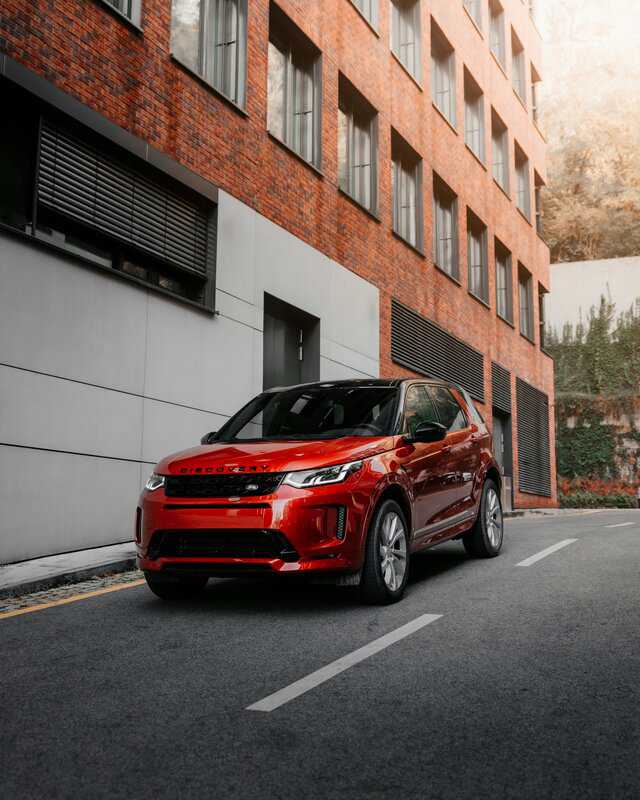
5. Nissan X-Trail (2007–2013)
The Nissan X-Trail (2007–2013), a practical crossover SUV from the second generation, offers ample space and versatility for families and adventurers, but its reliability shortcomings make it one of the worst cars for used buyers. Launched as a rugged alternative to the Qashqai, this model gained traction for its towing capability and off-road pretensions. However, a combination of underpowered engines, poor build quality, and persistent mechanical issues has led to widespread owner complaints, turning what should be a dependable workhorse into a frequent visitor to the repair shop.
Key Issues:
The X-Trail is dogged by several major problems, chief among them turbo failures in diesel models like the 2.0 dCi, where clogs and breakdowns require replacements costing £1,500–£2,500, often emerging around 80,000 miles. The suspension system feels bouncy and unstable at higher speeds, leading to premature wear on shocks and bushes (£600–£1,000 to fix). Power steering failures, particularly in 2011–2013 units, cause heavy handling and erratic assistance, with repairs averaging £800–£1,200.
Electronics breakdowns, including faulty ECUs and wiring harnesses, trigger warning lights and system shutdowns, adding £400–£900 per incident. Petrol variants suffer from weak acceleration due to underpowered 2.0-litre engines, while diesels face injector and EGR valve clogs under emissions scrutiny. Owner forums are rife with reports of smoke from the exhaust during acceleration, signaling turbo distress, and these issues compound after 100,000 miles, making high-mileage X-Trails a liability.
Why It’s One of the Worst Cars:
The X-Trail’s reliability ratings in What Car? and RAC surveys are dismal, with towing demands exposing structural weaknesses and emissions compliance adding regulatory headaches. Parts for these older Nissans are increasingly expensive due to supply constraints, and the model’s mediocre fuel economy clashes with rising costs. What starts as an affordable used buy quickly escalates into a money pit, with downtime and repair bills eroding any value.
Pro Tip:
When eyeing a used Nissan X-Trail, check for turbo smoke during acceleration and test the steering on winding roads for responsiveness. Review the service history for turbo and suspension maintenance, as neglected examples fail fast. A thorough test drive should include towing simulation if possible, and listen for unusual rattles. Invest in a pre-purchase inspection (£100–£200) to scan for electrical faults or injector issues. Avoid high-mileage diesels unless records show recent overhauls, and opt for petrol manuals to sidestep turbo woes—negotiate aggressively on price to buffer future costs.
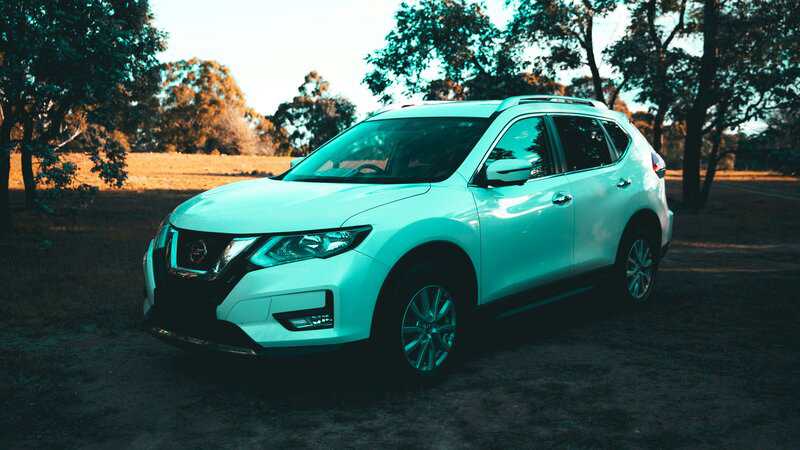
4. BMW 1 Series E87 (2004–2011)
The BMW 1 Series E87 (2004–2011), a compact hatchback, offers sporty handling and premium appeal, but its severe reliability issues make it one of the worst cars for used buyers. Popular for its rear-wheel-drive dynamics and sleek design, models like the 116i, 118i, and 120i attract drivers seeking an affordable entry into BMW ownership. However, catastrophic engine and turbo problems, especially in high-mileage examples, lead to costly repairs that quickly erode its value.
Key Issues:
The E87 is notorious for engine-related failures, particularly timing chain issues in petrol models (116i, 118i, 120i), where chains stretch or snap, requiring repairs costing £1,000–£2,000, often appearing around 70,000 miles. The N47 diesel engine, found in models like the 118d, is even worse, with timing chain failures that can destroy the engine, leading to rebuilds exceeding £3,000.
Turbo failures in both petrol and diesel variants, especially the M47 diesel, result in power loss and smoke, with replacements costing £1,200–£2,000. Electrical issues, including faulty Vanos systems and ECU glitches, trigger warning lights and misfires, adding £500–£1,000 per fix. Owner forums report these problems intensifying after 80,000 miles, with some drivers facing multiple engine-related failures, making the E87 a financial risk.
Why It’s One of the Worst Cars:
The E87’s poor reliability is well-documented in What Car? and Auto Express surveys, with owners citing frequent breakdowns and exorbitant repair costs. BMW’s premium parts and labor rates inflate bills, and supply issues for older components drive costs higher. The car’s rapid depreciation and poor resale value mean buyers often overpay for a vehicle prone to catastrophic failures, especially without meticulous maintenance records.
Pro Tip:
Before buying a used BMW 1 Series E87, demand proof of timing chain replacement, especially for N47 diesels, and verify full service history from a reputable source. During a test drive, listen for rattles or ticking from the engine and check for turbo lag or smoke. Test all electronics, including the Vanos system, for warning lights. A professional diagnostic scan, costing £100–£200, can detect early chain or turbo issues. Avoid high-mileage examples unless maintenance is impeccable, and negotiate the price to account for potential engine repairs, particularly for diesel models.
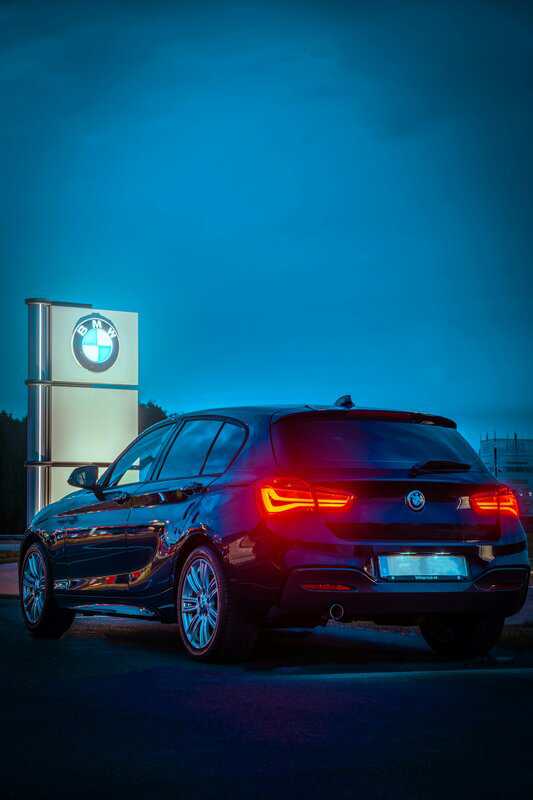
3. Audi A3 Diesel (2003–2013)
The Audi A3 Diesel (2003–2013), a premium compact hatchback, blends sporty styling, fuel-efficient diesel engines, and a luxurious interior, but its severe reliability issues make it one of the worst cars for used car buyers. Popular for models like the 1.9 TDI and 2.0 TDI, it appeals to drivers seeking luxury cars with economy. However, persistent mechanical failures, electrical problems, and emissions scandal fallout turn this used Audi into a costly nightmare, especially for high-mileage cars.
Key Issues:
The A3 Diesel suffers from turbo failures, particularly in the 2.0 TDI, where clogs or pressure loss cause power drops, with repairs costing £1,200–£2,000, often appearing around 80,000 miles. Coolant leaks from faulty water pumps or radiators damage engines, requiring fixes of £500–£1,000. Gearbox issues, affecting both DSG dual-clutch and manual transmissions, lead to jerky shifting or complete failure, with repairs averaging £1,000–£2,500.
Dual-mass flywheel breakdowns, common in diesel cars, cause vibrations and clutch issues, costing £800–£1,500 to replace. Electrical faults, including faulty sensors and wiring, trigger dashboard warnings and infotainment failures, adding £400–£900 per repair. Owner forums note these car problems worsening after 100,000 miles, with some facing multiple expensive repairs, making the A3 a risky used car purchase.
Why It’s One of the Worst Cars:
The A3’s poor reliability is evident in What Car? and Auto Express surveys, with owners reporting frequent breakdowns and high repair costs. The emissions scandal tied to VW Group diesels adds complications, with potential recalls and compliance issues increasing maintenance costs and insurance premiums. Premium Audi parts and labor rates inflate bills, and supply issues for older components drive costs higher. The A3’s depreciation further erodes value, making it one of the worst used cars for budget-conscious buyers.
Pro Tip:
Before buying a used Audi A3 Diesel, verify emissions compliance and check for recall completion. Inspect the service history for turbo and gearbox maintenance, and test the clutch and electronics during a test drive. Listen for turbo whine or shifting issues, and check for coolant leaks under the hood. A professional inspection (£100–£200) can detect hidden car faults like flywheel wear or wiring issues. Avoid high-mileage diesels unless records are comprehensive, and consider petrol models for fewer reliability issues. Negotiate the price to buffer potential repair bills.
2. Range Rover (2013 Onwards)
The Range Rover (2013 onwards), a pinnacle of luxury SUVs, offers unmatched style and off-road capability, but its shocking reliability issues make it one of the worst cars for used car buyers. Renowned for its plush interior and commanding presence, models like the Range Rover Sport and Vogue attract buyers seeking premium SUVs. However, persistent mechanical failures, electrical problems, and exorbitant repair costs turn this luxury car into a financial disaster, especially for high-mileage vehicles.
Key Issues:
The Range Rover is plagued by air suspension failures, where compressors or airbags fail, causing uneven ride height and repairs costing £1,500–£3,000, often appearing around 70,000 miles. Electrical breakdowns, including faulty navigation, infotainment, and climate control systems, trigger warnings and malfunctions, with fixes averaging £500–£1,200. Diesel particulate filter (DPF) clogs, common in 3.0 TDV6 models, reduce performance and require replacements costing £800–£1,500. Window regulators frequently snap, adding £300–£600 per repair, and gearbox issues in automatics lead to sluggish shifts or failures, with rebuilds exceeding £2,000. Owner forums report these car problems worsening after 100,000 miles, with some facing multiple expensive repairs, making used Range Rovers a risky purchase.
Why It’s One of the Worst Cars:
The Range Rover’s dismal reliability is evident in What Car? and Auto Express surveys, with owners citing frequent breakdowns and sky-high maintenance costs. Luxury car taxes and premium Land Rover parts inflate bills, while supply issues for older components drive costs higher. The emissions regulations targeting diesels add compliance costs, and rapid depreciation erodes resale value, making this one of the worst used SUVs for budget-conscious buyers.
Pro Tip:
Before buying a used Range Rover, run a diagnostic scan to check for electrical faults and suspension issues. Verify service history for DPF and gearbox maintenance, and test all systems, including navigation and air suspension, during a test drive. Inspect for window regulator issues and listen for gearbox noises. A professional inspection (£100–£200) can detect hidden car faults like DPF clogs. Avoid high-mileage diesels unless records are impeccable, and explore extended warranties to offset repair bills. Negotiate aggressively to account for potential SUV maintenance costs.
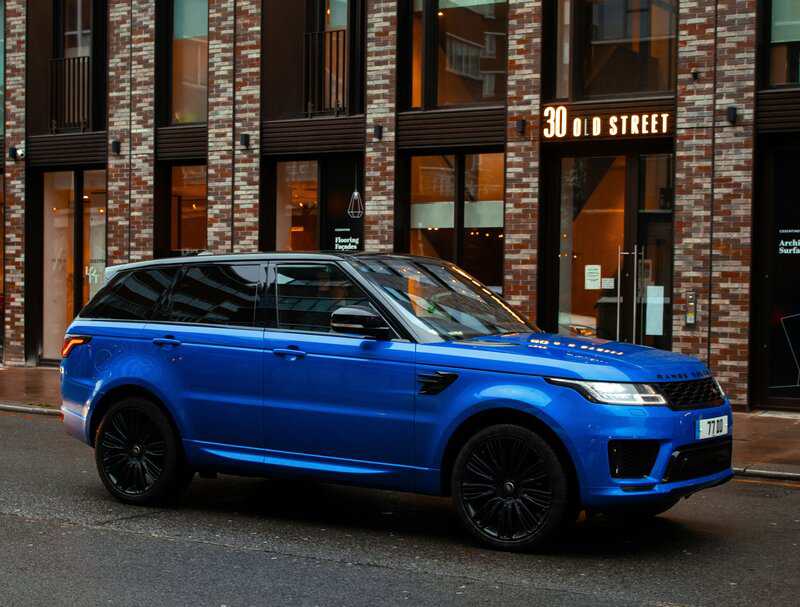
1. Volvo XC90 (2015 Onwards)
The Volvo XC90 (2015 onwards), a flagship luxury SUV, impresses with its safety features and spacious interior, but its chronic reliability woes make it the worst car on our worst cars list for used car buyers. Touted as a family-friendly premium SUV, models like the T8 hybrid and D5 diesel attract buyers seeking Scandinavian luxury. However, rampant mechanical failures, electrical glitches, and sky-high repair costs—often exceeding £2,000—turn this unreliable vehicle into a nightmare, especially post-warranty.
Key Issues:
The XC90 is infamous for electrical system failures, where infotainment screens freeze, head-up displays vanish, and parking brakes engage unexpectedly, costing £500–£1,500 to diagnose and fix. Air suspension problems in models like the T8 fail after 7–9 years, with compressor or airbag replacements hitting £3,000–£5,000.
Exhaust and emissions issues, affecting 16% of owners per Which? surveys, include clogged DPFs and faulty EGR valves, leading to limp mode and repairs of £1,000+. Oil leaks and coolant hose failures—subject to recalls for fire risks—can damage engines, with fixes averaging £2,500. Turbo troubles in diesels and piston ring failures in petrols add £1,500–£3,000 bills. Owner forums and Reddit threads report these car problems escalating after 60,000 miles, with software glitches halting the car mid-traffic.
Why It’s One of the Worst Cars:
Despite Volvo’s safety rep, the XC90 tops UK unreliability charts in What Car? and Which? reports, with one in six owners facing breakdowns. Post-warranty costs soar due to premium car parts and labor, while recalls for fuel leaks, seatbelts, and engine fires (affecting 70,000 UK units) raise insurance premiums and legal risks. Rapid depreciation—losing 50% value in three years—compounds the pain, making it a top bad used car for families eyeing reliable SUVs.
Pro Tip:
Before snagging a used Volvo XC90, confirm all recalls are addressed via Volvo (01628 854 210) and scrutinize service history for suspension and emissions work. Test infotainment, brakes, and suspension on a thorough test drive—watch for glitches or uneven ride. Check for oil/coolant leaks under the hood. A professional inspection (£100–£200) uncovers hidden car faults like DPF clogs. Favor 2018+ models with extended warranties, avoid high-mileage diesels, and haggle on price to cover looming repair bills.
Bonus Worst Car – Ford Focus (2011–2018, Powershift Models)
The Ford Focus (2011–2018, Powershift Models), a staple of UK roads, seems like a reliable family hatchback with its sleek design and affordability, but its catastrophic reliability issues make it the worst car for used car buyers. Popular for its handling and spacious interior, the Powershift automatic models are plagued by mechanical failures, earning a top spot on the worst cars list. Car buying mistakes with this unreliable vehicle lead to costly repair bills and legal woes.
Key Issues:
The Ford Focus is notorious for Powershift gearbox failures, where the dual-clutch transmission shudders, slips, or fails entirely, requiring rebuilds costing £2,000–£3,000, often appearing around 60,000 miles. Coolant leaks into engine cylinders, especially in 1.0 EcoBoost models, cause misfires and potential engine damage, with repairs averaging £1,500–£2,500.
Electrical faults, including faulty wiring and infotainment system crashes, trigger dashboard warnings and cost £400–£1,000 to fix. Owner forums report these car problems worsening after 80,000 miles, with some facing multiple expensive repairs, making used Ford Focus models a financial risk. The Powershift issues have sparked class-action lawsuits, adding legal complications for owners.
Why It’s One of the Worst Cars:
The Focus’s poor reliability is well-documented in What Car? and Auto Express surveys, with owners citing frequent breakdowns and high maintenance costs. Recalls for gearbox and coolant issues persist, increasing repair costs and insurance premiums. Ford’s complex car parts and labor rates inflate bills, and the car’s rapid depreciation erodes resale value, making it one of the worst used cars for budget-conscious buyers seeking reliable vehicles.
Pro Tip:
Before buying a used Ford Focus, avoid Powershift automatics and verify service history for gearbox and coolant system repairs. During a test drive, listen for transmission shudders and check for engine misfires or warning lights. Inspect the coolant reservoir for leaks. A professional inspection (£100–£200) can detect hidden car faults like wiring issues. Opt for manual transmissions for fewer reliability issues, and negotiate the price to account for potential repair bills. Check for recall completion to avoid legal headaches.
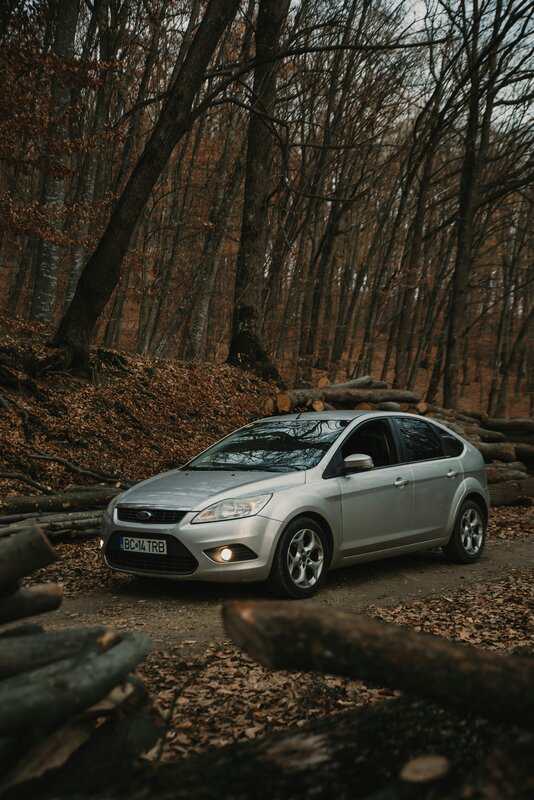
Keep Your Car Looking Its Best with Car Cosmetics – Mobile Body Repairs
Found a reliable used car but worried about dents, scratches, or scuffs? Visit www.carcos.co.uk for expert mobile car body repairs across the UK. Car Cosmetics offers convenient, high-quality car repair services, from bumper repairs to paint touch-ups, all at your location. Their skilled technicians restore your vehicle’s shine, boosting its resale value and appearance without the hassle of a garage visit. Save time and money—book your mobile car repair with Car Cosmetics today and drive with confidence!
How to Avoid the Worst Cars: Expert Buying Tips
Dodging the worst cars is just the start—here’s how to buy a reliable used car:
- Run a History Check: Use HPI or AA to spot mileage fraud or finance issues.
- Get a Professional Inspection: £100–£200 can uncover hidden car faults.
- Test Drive Properly: Check for rattles, test electronics, and push high-mileage cars.
- Budget for Repairs: Set aside 10–15% of the car’s price for maintenance costs.
- Best Alternatives: Choose Toyota Corolla, Honda CR-V, or Skoda Octavia for proven car reliability.
With used EV prices dropping, hybrid cars are a smart, future-proof choice. Check our YouTube video for owner stories and visuals.
Final Warning: Steer Clear of These Worst Cars for Stress-Free Driving
The worst cars to avoid prove that big brands don’t guarantee reliability. Skip these unreliable vehicles to save on repair costs and enjoy worry-free driving. Got a car in mind? Drop it in the comments—what’s your experience with bad cars? For more UK car advice, subscribe to Car Cosmetics. Drive smart!
